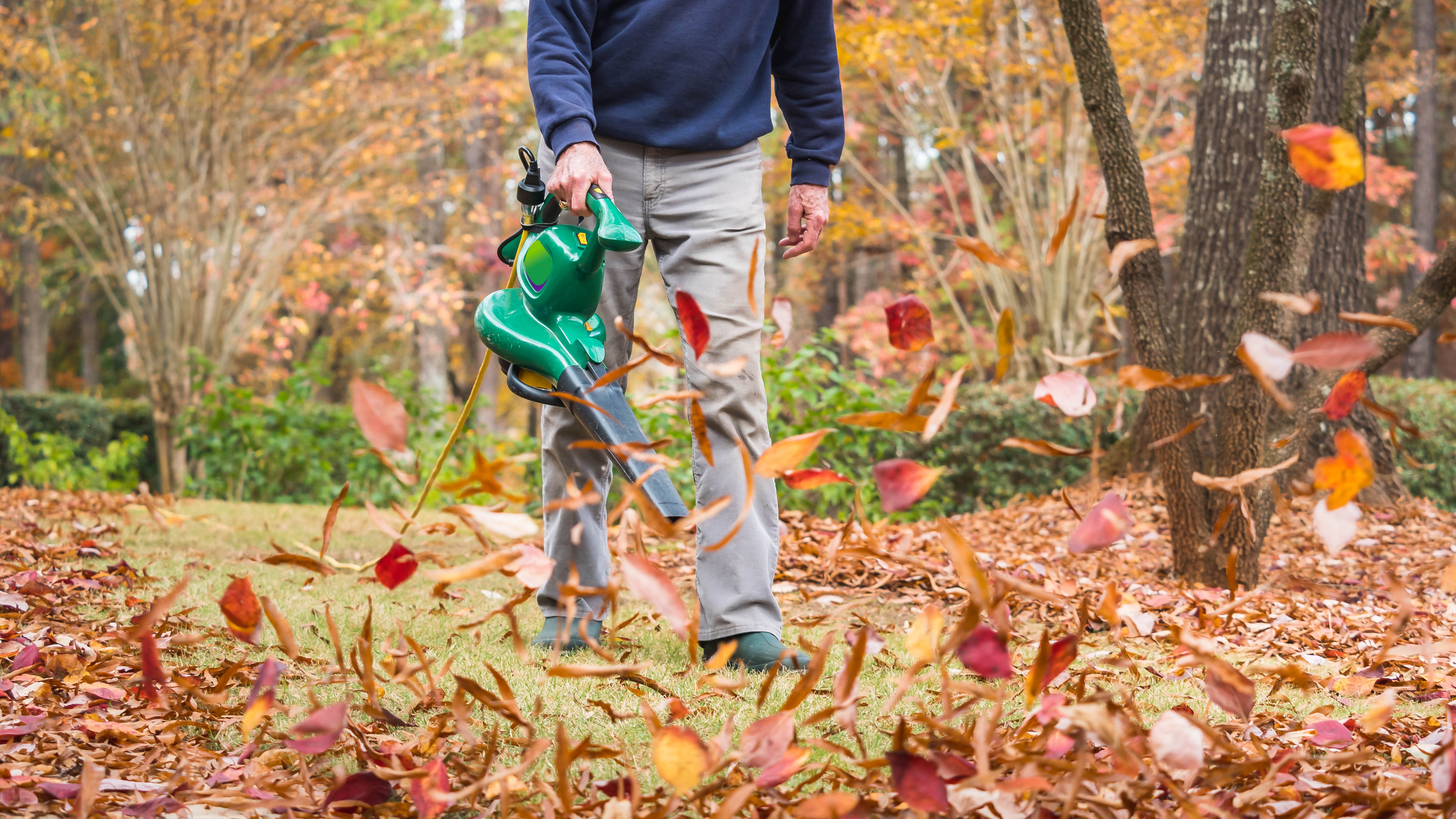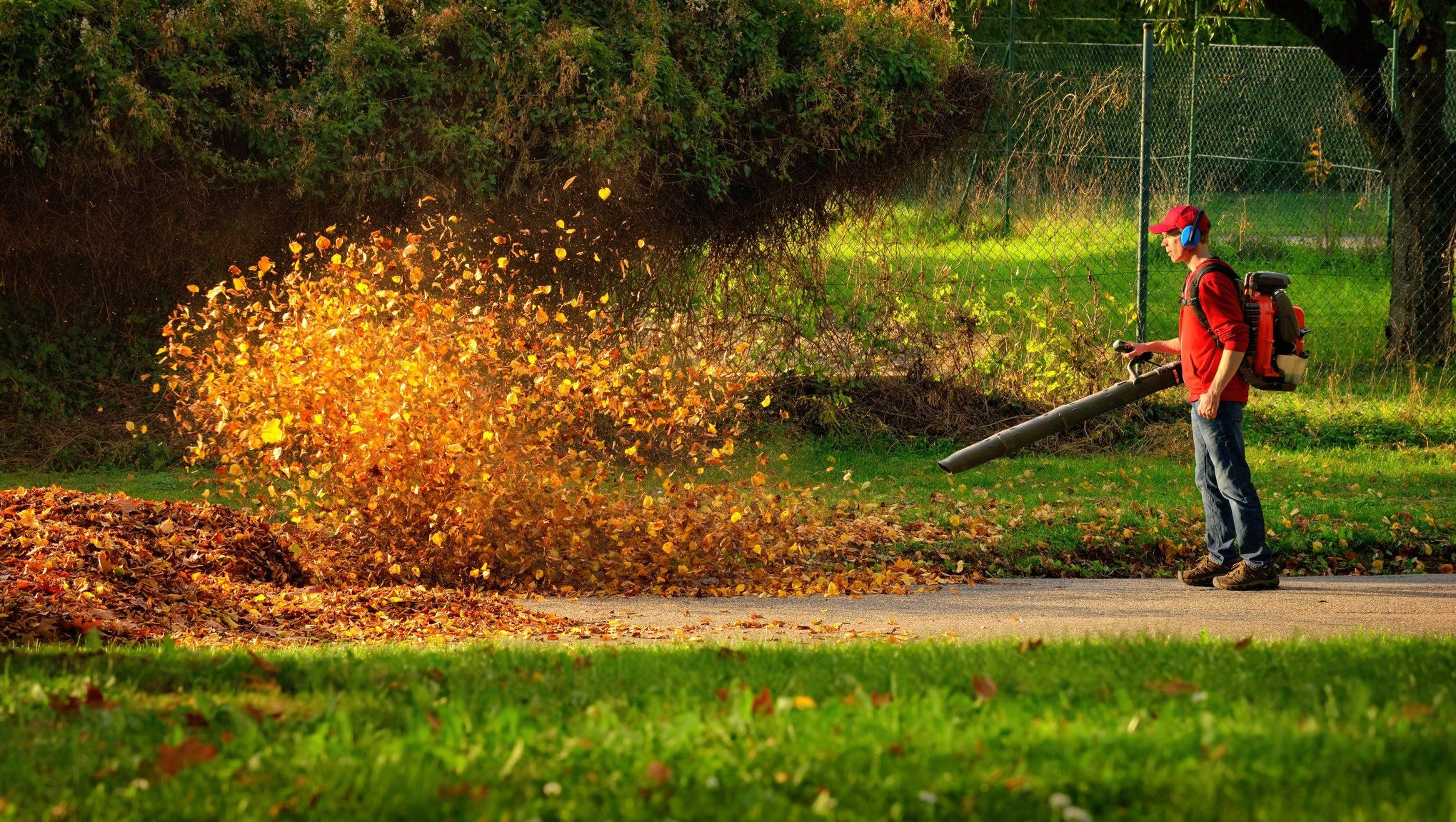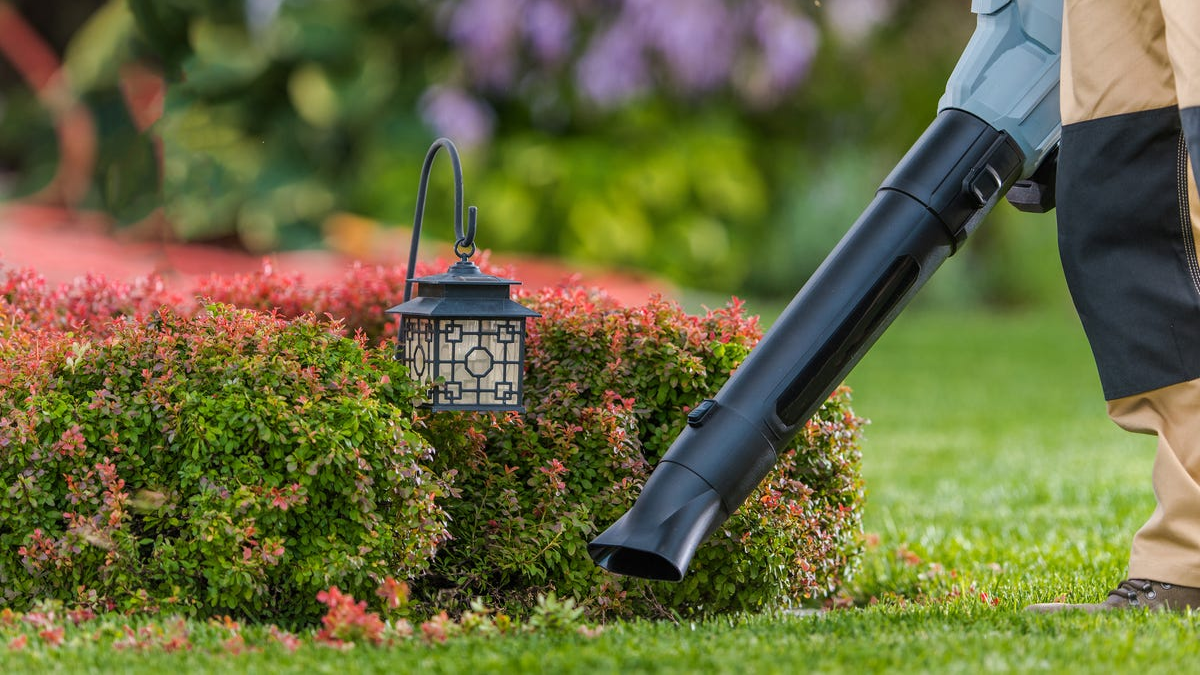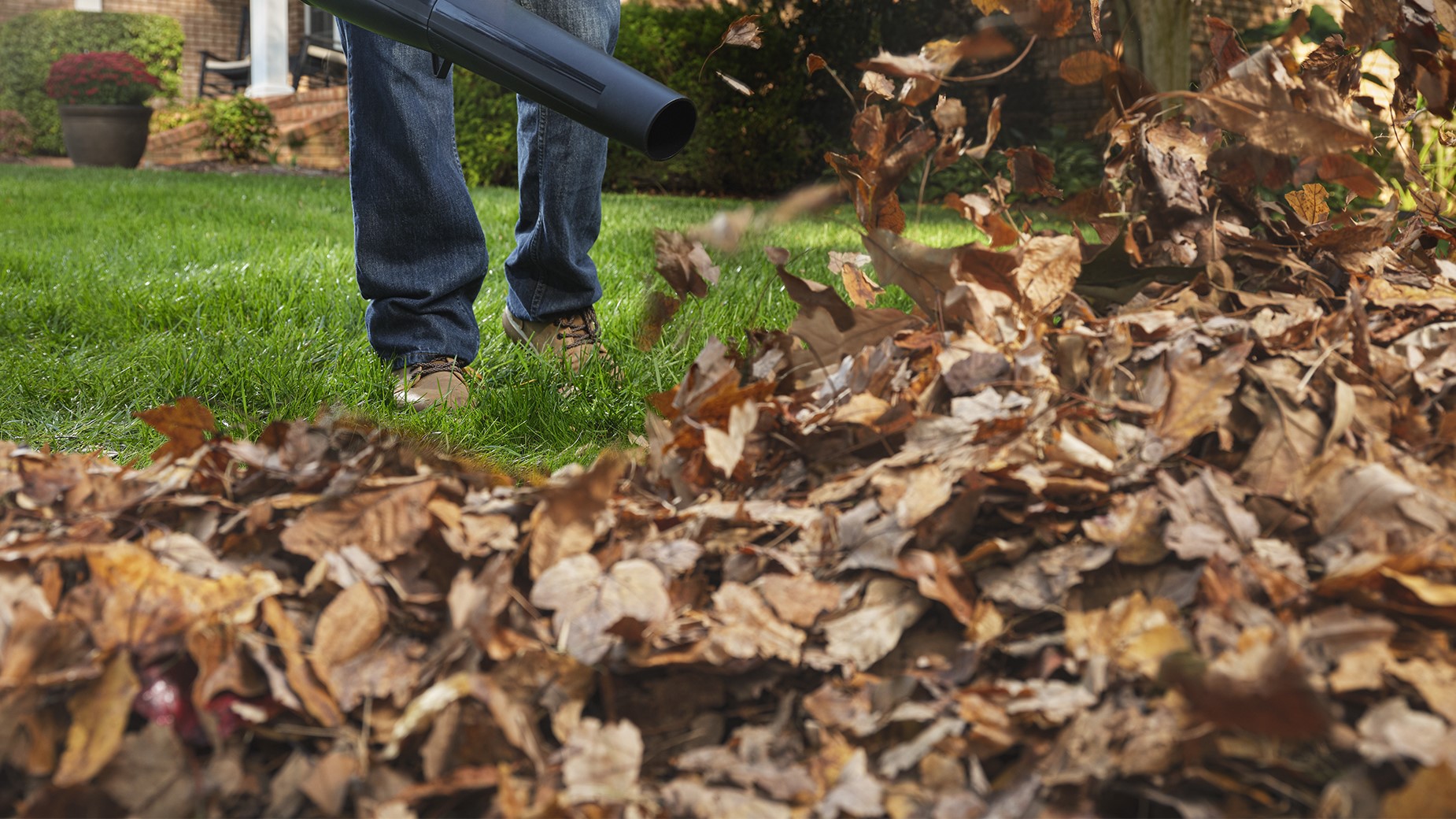
In recent years, the environmental impact of leaf blowers has become a growing concern. Traditional leaf blowers, often powered by gasoline engines, contribute significantly to air pollution and greenhouse gas emissions. The combustion of fossil fuels in these devices releases carbon dioxide (CO2) and other pollutants into the atmosphere, contributing to climate change and air quality degradation. The noise pollution generated by these machines also raises environmental and health concerns, impacting both humans and wildlife.
As a responsible community, we must address the ecological footprint of these ubiquitous lawn maintenance tools. In this article, we delve into the environmental implications of leaf blowers and explore the ongoing efforts to develop more sustainable alternatives.

The Carbon Footprint of Traditional Leaf Blowers
Traditional gas-powered leaf blowers have long been a staple in lawn care, providing efficiency but at a significant cost to the environment. These machines emit harmful pollutants, including carbon dioxide (CO2) and nitrogen oxides (NOx), contributing to air pollution and climate change. The noise pollution generated by gas-powered blowers further adds to the negative impact on both the environment and public health.
Here are some factors contributing to their carbon footprint:
Fossil Fuel Consumption:
Gasoline-powered leaf blowers burn fossil fuels, releasing carbon dioxide (CO2) and other pollutants into the atmosphere. This combustion process is a major contributor to climate change.
Emissions:
The combustion of gasoline in these leaf blowers produces not only CO2 but also other harmful pollutants, such as nitrogen oxides (NOx) and particulate matter. These pollutants can have negative impacts on air quality and human health.
Energy Production:
The production and transportation of gasoline also contribute to the overall carbon footprint of traditional leaf blowers. Extracting, refining, and transporting fossil fuels all involve energy-intensive processes that release additional emissions.
Maintenance and End-of-Life:
The maintenance and eventual disposal of gasoline-powered leaf blowers also contribute to their carbon footprint. Oil changes, air filter replacements, and other maintenance activities involve energy use and potential waste generation.
To reduce the carbon footprint associated with leaf blowers, alternative options can be considered, such as electric leaf blowers or manual tools like rakes. Electric leaf blowers, especially those powered by renewable energy sources, can significantly lower emissions compared to their gasoline counterparts. Additionally, the use of manual tools eliminates the need for any fuel consumption or emissions during operation.
Local regulations and incentives may also play a role in encouraging the adoption of more environmentally friendly alternatives, contributing to a reduction in the overall carbon footprint of leaf maintenance practices.

Electric Leaf Blowers: A Step Towards Sustainability
In response to the environmental concerns surrounding gas-powered leaf blowers, electric alternatives have emerged as a more sustainable option. Electric leaf blowers, powered by electricity, produce zero emissions at the point of use. This significantly reduces their carbon footprint compared to their gas counterparts. As technology advances, electric leaf blowers are becoming more powerful and efficient, offering a viable alternative for environmentally conscious consumers.
Here are several reasons why electric leaf blowers are considered more environmentally friendly:
Zero Emissions at Point of Use:
Electric leaf blowers produce no direct emissions during operation. Unlike gasoline-powered blowers, they do not burn fossil fuels, resulting in lower air pollution and a reduced contribution to climate change. This makes them a cleaner and more sustainable choice for yard maintenance.
Lower Carbon Footprint:
The overall carbon footprint of electric leaf blowers is generally lower, especially when the electricity used to power them comes from renewable sources such as wind or solar. As the grid becomes greener, the environmental benefits of electric tools, including leaf blowers, increase.
Reduced Noise Pollution:
Electric leaf blowers are typically quieter than their gasoline counterparts, contributing to a more pleasant and sustainable living environment. Lower noise levels can have positive impacts on both human well-being and wildlife.
Ease of Use and Maintenance:
Electric leaf blowers are often easier to use and require less maintenance compared to gasoline-powered models. They eliminate the need for fuel mixing, oil changes, and other tasks associated with traditional leaf blowers, reducing the environmental impact of maintenance activities.
Incentives and Regulations:
Some regions offer incentives or rebates for the purchase of electric yard tools, including leaf blowers. Additionally, environmental regulations may restrict the use of gas-powered equipment in certain areas, further encouraging the adoption of electric alternatives.
While electric leaf blowers are a positive step towards sustainability, it's essential to consider the source of electricity used to charge them. Opting for renewable energy sources further enhances their eco-friendly credentials. As technology continues to advance and environmental awareness grows, the shift towards electric yard tools is likely to contribute to more sustainable and responsible landscaping practices.

Innovations in Battery Technology
One of the key challenges with electric leaf blowers has been their reliance on power cords, limiting mobility and convenience. However, advancements in battery technology are addressing this issue. Lithium-ion batteries, known for their high energy density and longer life, are now powering a new generation of cordless electric leaf blowers. These innovations not only enhance user experience but also contribute to the overall sustainability of lawn care practices.
There have been significant innovations in battery technology, driven by the increasing demand for portable electronic devices, electric vehicles, and renewable energy storage. These advancements aim to improve energy density, safety, charging speed, and overall performance. Here are some notable innovations in battery technology:
Lithium-Ion Batteries (Li-ion):
High Energy Density: Lithium-ion batteries offer a high energy density, providing more energy storage capacity in a compact and lightweight form. This makes them widely used in portable electronics and electric vehicles.
Solid-State Batteries:
Improved Safety: Solid-state batteries replace the liquid or gel electrolyte in traditional batteries with a solid electrolyte. This design enhances safety by reducing the risk of leakage, fire, and thermal runaway. Solid-state batteries also have the potential to offer higher energy density.
Lithium-Sulfur Batteries:
Higher Energy Density: Lithium-sulfur batteries have the potential for significantly higher energy density compared to traditional lithium-ion batteries. This could result in lighter and more energy-efficient batteries for various applications.
Graphene Batteries:
Enhanced Conductivity: Graphene, a single layer of carbon atoms arranged in a hexagonal lattice, has shown promise in improving the conductivity and charge/discharge rates of batteries. Graphene batteries may offer faster charging times and longer cycle life.
Flow Batteries:
Scalability and Longevity: Flow batteries use liquid electrolytes stored in external tanks. They are particularly attractive for grid-scale energy storage due to their scalability and potential for a longer cycle life. Vanadium flow batteries are a notable example.
Sodium-Ion Batteries:
Abundant Resources: Sodium-ion batteries are being explored as an alternative to lithium-ion batteries, using sodium as a charge carrier. Sodium is more abundant and cost-effective than lithium, making these batteries potentially more sustainable.
Dual-Ion Batteries:
Improved Stability: Dual-ion batteries use both anions and cations to store charge, allowing for improved stability and efficiency. This design can enhance the performance and safety of batteries.
Self-Healing Batteries:
Extended Lifespan: Some research focuses on developing batteries with self-healing capabilities. Materials that can repair themselves may lead to batteries with a longer lifespan and increased durability.
Quantum Batteries:
Quantum Materials: Quantum batteries involve incorporating quantum materials, such as quantum dots, to enhance the performance of batteries. These materials may enable more efficient energy storage and conversion processes.
Biodegradable Batteries:
Environmentally Friendly: Researchers are exploring biodegradable materials for battery components, making them more environmentally friendly and easier to recycle.
These innovations represent ongoing efforts to address the challenges of energy storage, improve sustainability, and meet the growing demands for efficient and eco-friendly battery technologies across various industries.
The Rise of Eco-Friendly Biomimicry Designs
In the pursuit of truly sustainable alternatives, researchers and engineers are turning to nature for inspiration. Biomimicry, the practice of imitating natural processes and structures, has given rise to innovative leaf blower designs that mimic the efficiency of natural processes. By incorporating biomimicry principles, manufacturers aim to create tools that minimize environmental impact while maximizing effectiveness.

Community Initiatives for Sustainable Lawn Maintenance
Beyond technological advancements, communities are actively engaging in initiatives to promote sustainable lawn maintenance practices. Local governments and environmental organizations are advocating for restrictions on the use of gas-powered leaf blowers, encouraging the adoption of electric or manual alternatives. Landscaping companies are also playing a pivotal role by transitioning to eco-friendly equipment and promoting environmentally conscious practices.
Community initiatives for sustainable lawn maintenance are gaining momentum as people become more environmentally conscious. These initiatives focus on adopting practices that reduce environmental impact, promote biodiversity, and contribute to overall community well-being. Here are some ideas for community-led efforts in sustainable lawn maintenance:
Community Gardens:
Establish community gardens where residents can collectively grow fruits, vegetables, and herbs. This promotes sustainable landscaping practices and reduces the need for traditional lawns.
Native Plant Landscaping:
Encourage the use of native plants in residential landscapes. Native plants are adapted to the local climate and require less water and maintenance. Community workshops or plant exchange programs can help residents transition to native landscaping.
Composting Programs:
Implement community-wide composting programs to reduce the amount of organic waste sent to landfills. Compost can be used to enrich soil health in community gardens and lawns.
Rainwater Harvesting:
Promote the installation of rain barrels or other rainwater harvesting systems to collect and reuse rainwater for lawn and garden irrigation. This reduces reliance on municipal water sources.
Community Workshops and Education:
Organize workshops and educational programs on sustainable lawn care practices. Topics can include organic lawn care, integrated pest management, and the benefits of reducing chemical inputs.
Tool Sharing Programs:
Set up a tool-sharing program where community members can borrow or rent lawn and garden tools instead of each household purchasing and maintaining its own equipment. This reduces resource consumption and promotes a sense of community sharing.
Lawn Alternatives:
Encourage the use of alternative ground covers that require less maintenance than traditional lawns. This could include options like clover, wildflowers, or ground covers that support local pollinators.
Pollinator-Friendly Initiatives:
Establish pollinator-friendly areas within the community by planting flowers and plants that attract bees, butterflies, and other pollinators. This not only supports biodiversity but also enhances the beauty of the neighborhood.
No-Mow Zones:
Designate certain areas as "no-mow zones" where natural vegetation is allowed to grow. This helps create habitats for local wildlife and reduces the carbon footprint associated with lawn maintenance.
Green Infrastructure Projects:
Collaborate with local authorities to implement green infrastructure projects, such as rain gardens and permeable pavement, to manage stormwater runoff effectively and improve overall environmental resilience.
Community Clean-Up Events:
Organize regular community clean-up events to address litter and debris in public spaces. A clean environment fosters community pride and encourages responsible stewardship.
Local Regulations and Guidelines:
Advocate for or collaborate on the development of local regulations or guidelines that promote sustainable lawn care practices, such as restrictions on certain pesticides or incentives for eco-friendly landscaping.
By fostering a sense of community and shared responsibility, these initiatives contribute to more sustainable and environmentally friendly lawn maintenance practices, creating healthier and more resilient neighborhoods.

Conclusion: Navigating Towards a Greener Future
In conclusion, the environmental impact of leaf blowers underscores the importance of adopting sustainable alternatives in our approach to lawn care. The evolution of technology in this field, particularly the shift from gas-powered to electric leaf blowers, signals a positive trajectory towards reducing our ecological footprint. Innovations in battery technology further contribute to this greener future, offering more energy-efficient and environmentally friendly options.
As we navigate towards a greener future in lawn maintenance, it's crucial to embrace not only cleaner tools but also holistic approaches. Community initiatives promoting native plant landscaping, composting, and sustainable gardening play a vital role in fostering environmental consciousness at the grassroots level. The concept of biomimicry in design, inspired by nature's efficiency, adds an innovative dimension to creating eco-friendly solutions.
By collectively choosing sustainable practices, encouraging education, and advocating for responsible regulations, communities can contribute to a healthier and more environmentally conscious landscape. Nurturing this shift towards greener alternatives is not only a commitment to environmental stewardship but also a step towards creating more resilient and sustainable communities for the generations to come.
Post time: Jan-05-2024

